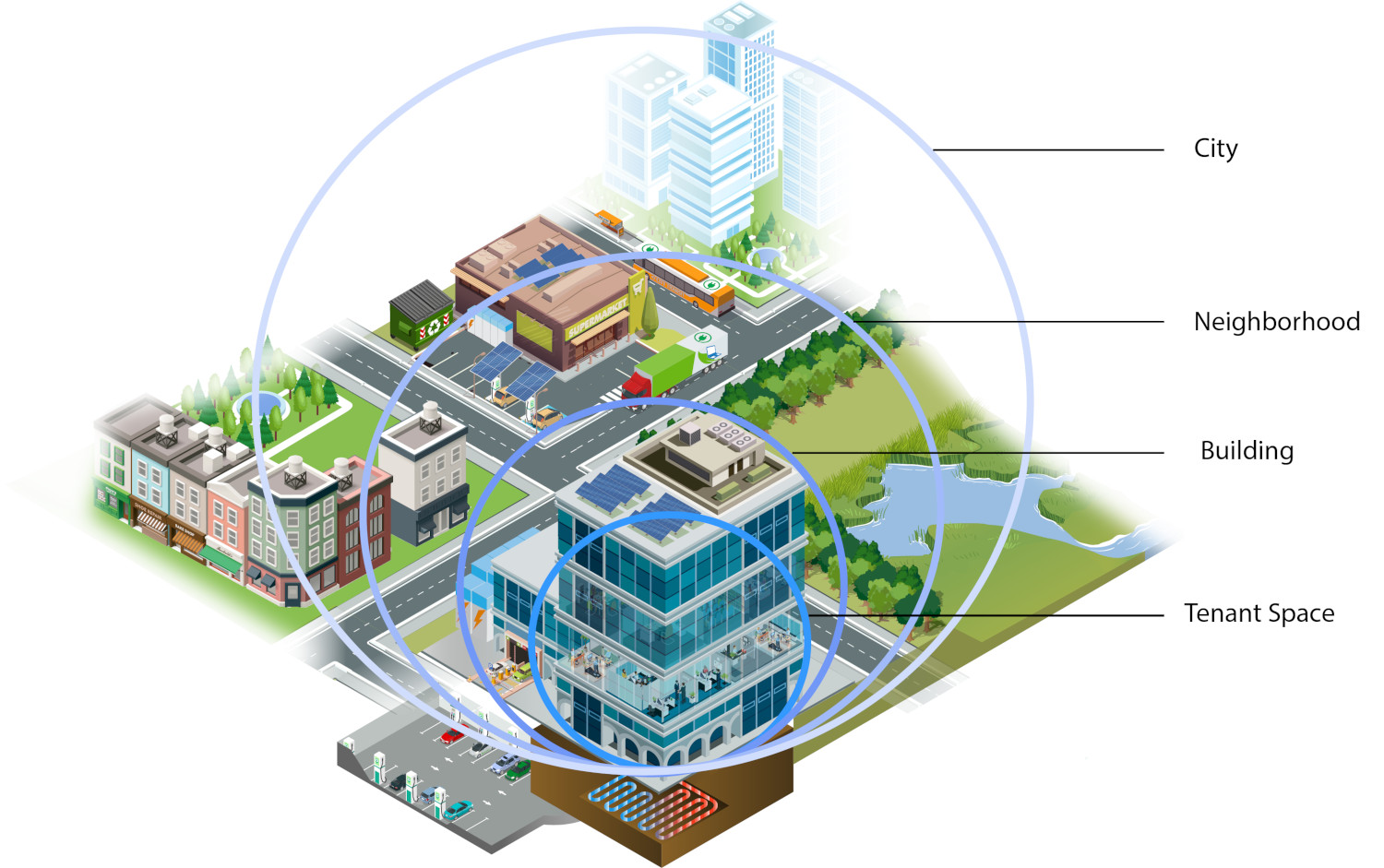Systems Thinking
Unlike conventional design processes, where components and disciplines are treated separately, sustainable design requires systems thinking – a holistic evaluation of systems and their interrelationships. Instead of thinking about each strategy in isolation, systems thinking requires thinking about:
- Interconnectedness – how strategies interact,
- Synergies and Trade-offs – how strategies work together (or against one another)
- Priorities and Risks – whether strategies may have unintended consequences and how to balance strategies that work against one another.
First look at the project overall, then work toward specific strategies, rather than starting with the details.
In addition, the project “system” is nested within larger systems with which it is interdependent.- A tenant space and its building.
- A building and its neighborhood.
- A neighborhood and its watershed, air shed, tree canopy, and city.
These larger systems should also be considered during the design process to find optimal solutions.

Interconnectedness
Systems thinking is an approach more than a practice. It is a holistic way to consider interdependence and the effects and outcomes of planning and design processes and decisions. And it encourages the development of solutions that address multiple challenges.
At the project level for example, if a goal is to reduce energy from lighting and improve occupant comfort, consideration should be given not only to the type of lighting fixtures, but also to:
- how the space will be used by the occupants,
- the amount of daylight available and how it penetrates the space,
- the surface reflectance of the walls, and
- how light levels will be controlled.
By thinking holistically about the lighting system, rather than simply about the lighting components, a more comfortable, efficient, healthy and productive space can be created.
For project teams, this means bringing a diverse team together, using an integrative design process to find new and creative solutions that cross disciplinary boundaries – and avoiding silos. When project teams are siloed – each member making decisions and assumptions independently – it can result not only in frustration and inefficiency, but errors and liabilities. When project teams are integrated, sharing ideas and confirming assumptions, innovative ideas are much more likely to emerge.
Synergies and Trade-offs
This approach also looks for synergies among strategies – strategies that enhance one another or together reduce costs. For instance, planted roofs – also known as vegetated roofs or eco-roofs – can reduce building energy use, manage stormwater, increase biodiversity and help mitigate the urban heat island effect. A successful and cost effective planted roof is best achieved through an integrative design process.
Project teams should also be attentive to trade-offs – when a strategy produces both a benefit and a disadvantage or when two strategies are at odds. For example, supplying fresh outdoor air and removing pollutants requires energy. One project goal may be to increase ventilation to supply more outdoor air. Another project goal may be to optimize energy use. Systems thinking encourages project teams to balance these goals and seek solutions that may achieve both.
Setting Priorities and Managing Risks
Using a systems thinking approach isn’t meant to overwhelm with infinite possible impacts and scenarios. But it does require project teams to have clear direction so that decisions about risks and trade-offs are informed and aligned with the Owner’s Project Requirements. This is best achieved when project teams:
- set clear goals and priorities
- evaluate decisions and solutions against multiple criteria
- minimize risk and unintended consequences by considering interdependencies
- find balance among competing strategies

